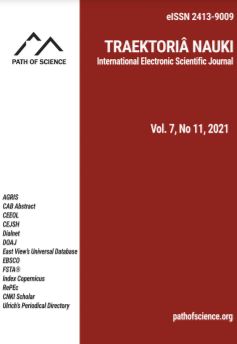Класифікація та методика оцінювання складності акробатичних вправ «групи А» в артистичному плаванні
Classification and Assessing Methods of the Complexity of “Group A” Acrobatic Exercises in Artistic Swimming
Author(s): Anastasiia Petrenko, Oleg Ivanovich KamayevSubject(s): Methodology and research technology, Sports Studies
Published by: Altezoro, s. r. o. & Dialog
Keywords: acrobatic exercises; artistic swimming; jumps; classification; technical value; analysis of competitive exercises;
Summary/Abstract: Article purpose – to classify acrobatic movements of group A “airborne” (jumps) and identify the main components that affect their technical value. According to research, acrobatic movements of group A “airborne” – (in the air) – are not divided into subgroups but differ (classified) by the variety of construction, the direction of the jump, the position of the featured swimmer’s body in the air (posture) and the type and number of rotation demonstrated by the featured-swimmer in the air. The first criteria of difficulty was defined as “Construction” – is a generalized name for collaborated work of all athletes according to their assigned role in the acrobatic movement (base+ support+ featured swimmer), and it is also the name of a “formation” from which the acrobatic moves of group A “airborne” begins. Depending on the complexity and efficiency of the design, was is classified into four levels. The fourth level of construction – a “square” (basket), is defined as the most difficult and highly effective. The main components that affect the technical value of the component “Construction” were defined. The second criterion of difficulty, respectively, and technical value, was the directions of the jumps. Five directions of jumps are classified. The most difficult, and rated at 0,4 points, is the jump “in the opposite direction”. The next evaluation criterion was how the acrobatic movement is performed in the air. All positions are divided into four groups (considering flexibility and additional factors). An important criterion for assessing the technical value of acrobatic exercise is the number of rotations and the plane in which the rotation is performed in the air. Rotations are classified into 4 types: "twists", "somersaults", "side flips" and "two-dimensional rotations". The technical value of rotation depends on each additional 180 degrees rotation and increases with 0,2 for each 360 to prevent disbalance in the general classification. So, the rotation of 180 ° is estimated at 0,1 point, 360 ° – 0,3 points, 540 ° – 0,5 points, 720 ° – 0,7 points, 900 – 0,9 ° points. To get total technical value of the acrobatic movement, all components’ numbers should be summarized. Technical value varies between all acrobatic movements in this group depending on which coach would choose different components of the acrobatic movements. The developed system allows the creation of any combination (“set”) of the components, so it doesn’t ruin the creativity of routine in artistic swimming, which is one of the main ideas of this sport. Based on the developed method of calculating the technical value of acrobatic movements, a single table of technical value of acrobatic exercises “group A” was created – in the air, where acrobatic moves were distributed from easiest to most accessible most difficult according to the calculated technical value.
Journal: Traektoriâ Nauki
- Issue Year: 7/2021
- Issue No: 11
- Page Range: 6001-6013
- Page Count: 13
- Language: Ukrainian

